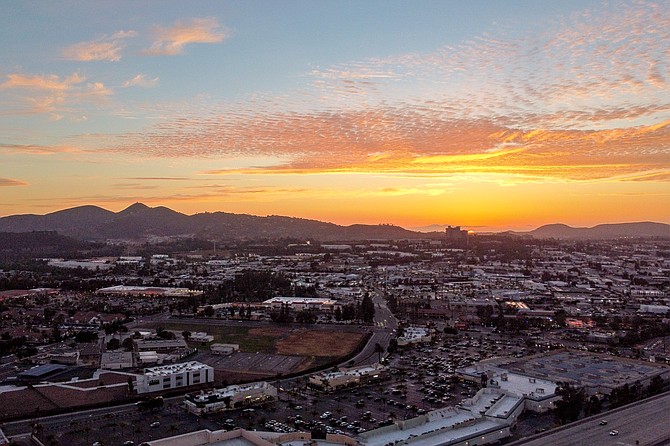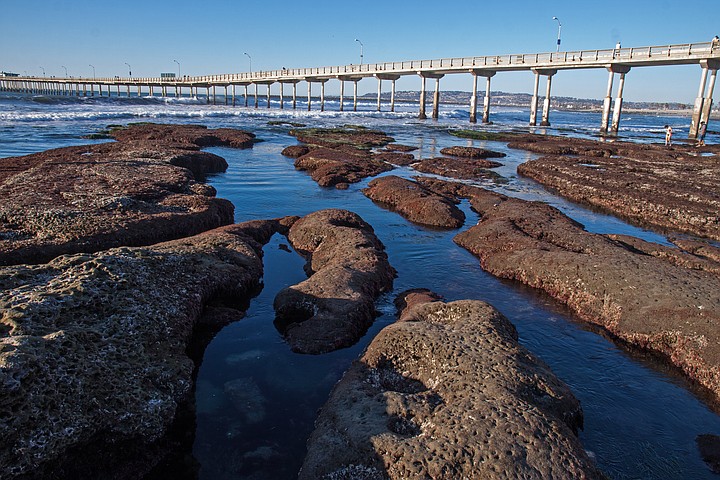 Facebook
Facebook
 X
X
 Instagram
Instagram
 TikTok
TikTok
 Youtube
Youtube

The Time of Sunset changes most rapidly this time of the year. This is mainly because the sun is swinging rapidly south along the ecliptic (its apparent path through the background stars). From the latitude of San Diego, the sun is now setting about 75 seconds earlier every day (equivalent to about 9 minutes earlier per week), and its setting position along the horizon shifts southward about 1/2 degree per day.

The Highest Tide for September (7’1”) is predicted for 8:30 pm on Thursday, the 8th. The month’s lowest tide (1’) will occur on the morning of September 9th at 3:17 am. During September the tidal range is typically minimized. Starting in mid-October, extreme negative tides will begin to occur during the afternoon hours (a much more convenient time for exploring tidepools in the low-lying intertidal zone), and not much in the early morning. By December and January, the highest high tides will crest at nearly +7 feet during morning hours, and the lowest low tides will sink to nearly -2 feet during afternoon hours.
The Zodiacal Light, which can appear as a diffuse, pillar-shaped glow in the eastern sky for up to an hour before dawn, will be quite conspicuous at dark locations this weekend. The subtle glow is caused by the sun’s light reflecting off dust particles floating in space in the plane of our solar system. In the sky, this reflected light appears superimposed along the string of constellations we know as the zodiac, and especially those zodiacal constellations closest to the direction of the sun. An old name for this phenomenon is “false dawn” — a good description of the effect under clear and very dark skies.
There will be a Full Moon at 2:59 a.m. Saturday morning. The Moon rises in the east-southeast just after sunset. Northern Hemisphere folk names for the September full moon also include “wine moon,” “singing moon,” “sturgeon moon,” and “moon when deer paw the earth.”
The above comes from the Outdoors listings in the Reader compiled by Jerry Schad, author of Afoot & Afield in San Diego County. Schad died in 2011. Planet information from SkyandTelescope.org.


The Time of Sunset changes most rapidly this time of the year. This is mainly because the sun is swinging rapidly south along the ecliptic (its apparent path through the background stars). From the latitude of San Diego, the sun is now setting about 75 seconds earlier every day (equivalent to about 9 minutes earlier per week), and its setting position along the horizon shifts southward about 1/2 degree per day.

The Highest Tide for September (7’1”) is predicted for 8:30 pm on Thursday, the 8th. The month’s lowest tide (1’) will occur on the morning of September 9th at 3:17 am. During September the tidal range is typically minimized. Starting in mid-October, extreme negative tides will begin to occur during the afternoon hours (a much more convenient time for exploring tidepools in the low-lying intertidal zone), and not much in the early morning. By December and January, the highest high tides will crest at nearly +7 feet during morning hours, and the lowest low tides will sink to nearly -2 feet during afternoon hours.
The Zodiacal Light, which can appear as a diffuse, pillar-shaped glow in the eastern sky for up to an hour before dawn, will be quite conspicuous at dark locations this weekend. The subtle glow is caused by the sun’s light reflecting off dust particles floating in space in the plane of our solar system. In the sky, this reflected light appears superimposed along the string of constellations we know as the zodiac, and especially those zodiacal constellations closest to the direction of the sun. An old name for this phenomenon is “false dawn” — a good description of the effect under clear and very dark skies.
There will be a Full Moon at 2:59 a.m. Saturday morning. The Moon rises in the east-southeast just after sunset. Northern Hemisphere folk names for the September full moon also include “wine moon,” “singing moon,” “sturgeon moon,” and “moon when deer paw the earth.”
The above comes from the Outdoors listings in the Reader compiled by Jerry Schad, author of Afoot & Afield in San Diego County. Schad died in 2011. Planet information from SkyandTelescope.org.
Comments